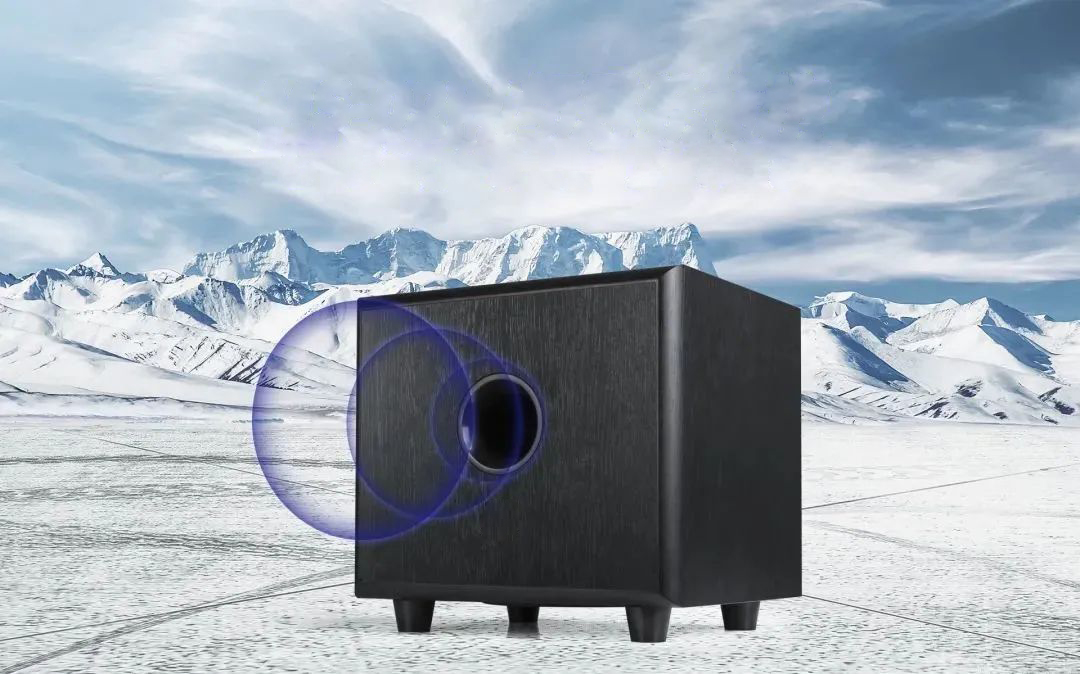
In many cases of building a home theater system, the selection and adjustment of the subwoofer is the most easily overlooked.
Many users don’t even understand why a home theater system must have a subwoofer? Can’t the main speaker replace the subwoofer? Or they have no idea when choosing a product. Does the larger the subwoofer, the better the effect? How to adjust the phase of the subwoofer? For practical purposes, we will directly interpret the questions that friends are confused about or encounter in this issue.
01 Subwoofer is essential
Whether it is the Dolby Digital, DTS built into the early DVDs, or the current Dolby Atmos, Dolby HD, DTS True HD and other audio encodings, there are independent subwoofer channels.
In other words, under the specifications of these formal multi-channel audio encodings, one or more active subwoofers must be used to display the mid-range, bass and even ultra-low frequency bands in the audio.
02 Don’t judge the quality of a subwoofer by its size
The size of a subwoofer involves factors such as the driving power of the subwoofer itself, the type of the box, the efficiency of the unit and the instantaneous performance.
A large-sized subwoofer can certainly push air with a larger area, thereby producing more substantial low frequencies, but it has a much heavier sound basin weight than a small-sized subwoofer. If you want it to produce stronger low frequencies, you must first have a stronger output power in the amplification circuit.
In addition, the instantaneous performance of a large-sized subwoofer is often not as good as that of a small-caliber subwoofer, so the speed sense of the low frequency transmission is often not fast enough, and even produces a “tailing” phenomenon of the sound. Therefore, a large-sized subwoofer mostly only provides a larger low-frequency component, and the speed sense cannot be as light and agile as a small-sized subwoofer.
03 Main speakers instead of subwoofers? The sound effect will be compromised
The size of the speaker unit alone cannot determine whether the mid- and low-frequency ranges (especially the low-frequency part) of the whole combination of the home theater system are sufficient, because the regular multi-channel system will most likely give the frequency band below 80Hz or 90Hz to the subwoofer. For users who do not consider buying a subwoofer, they can also set the main speakers to full frequency through settings.
However, such a setting will inevitably put a greater burden on the amplification circuits of the main speakers and the theater amplifier itself. In addition, the subwoofer can also independently adjust the volume, crossover point and phase, and can also adjust the position according to the size of the space. A home theater system with a subwoofer has more flexibility in overall debugging.
04 Subwoofers are phase sensitive
Simply put, when the subwoofer and the left and right channel speakers are emitting sound in the same direction, the phase of the sound emitted by the two should be close to the same phase.
If the subwoofer is placed in a position “opposite” to the speaker, the subwoofer and the left and right speakers will form a 180-degree anti-phase state. At this time, if the phase of the subwoofer back panel is not set to 180 degrees (anti-phase), not only will the subwoofer low frequency always be emitted from the back of the sound field, or some frequency bands between the subwoofer and the speaker will cause phase inconsistency, but even due to the overlap or cancellation of the phase, some low-frequency bands will increase or disappear.
When we adjust the positive and negative phases of the subwoofer, we can follow the low-frequency volume heard at the listening position. In other words, when we play a song with a strong low-frequency volume, you can sit at the listening position, and then switch the positive and negative phases of the subwoofer in turn. As long as you can feel a strong low-frequency effect at the listening position, that phase is considered to be the phase that allows you to feel the low frequency.
05 The low frequency is a mess, how should I adjust it?
Generally speaking, the subwoofer often causes some frequency bands to disappear, but some frequency bands are excessive because of the frequency bands and phase offset or increase in the space.
First of all, when we adjust the subwoofer, we can start with the four parts of the subwoofer position and angle, phase selection, volume and crossover point as adjustment items. During the initial debugging, we can adjust the volume to a larger level first, and then adjust the appropriate volume at the end. After the low frequency confusion problem is improved to a certain extent, use the music and movies you are familiar with as the playback test. After several adjustments and settings in this way, the subwoofer effect will be improved to a certain extent.


